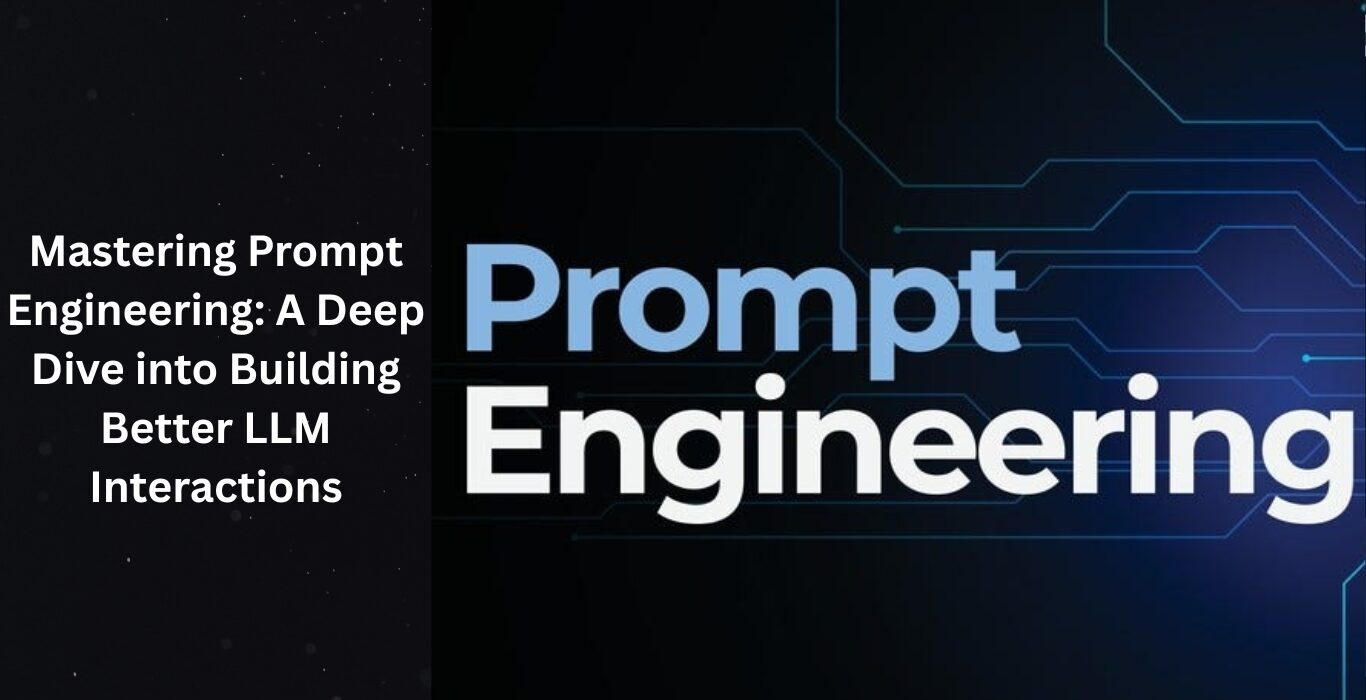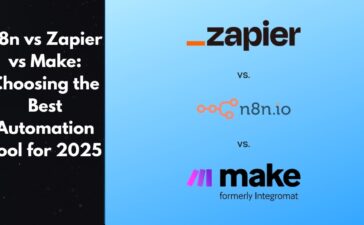Prompt engineering has rapidly become a foundational skill in the AI era, enabling users to effectively interact with Large Language Models (LLMs) like Gemini, GPT, Claude, and others. Much like a recipe’s success depends on how ingredients are combined, an AI response’s outcome hinges on the prompt’s structure and intent. Recognizing this, Google’s 2024 whitepaper on Prompt Engineering explores advanced techniques and practical applications. Whether you’re automating workflows, generating content, or writing code, mastering prompts—and knowing how to configure the LLM’s settings—is key to achieving accurate, efficient, and creative results in today’s digital ecosystem.

What Is Prompt Engineering?
At its core, prompt engineering is the design of effective text inputs that direct LLMs to perform tasks like reasoning, classification, summarisation, translation, or code generation. Since an LLM works by predicting the next token based on its training and the prompt it receives, a poorly constructed input can lead to vague, incorrect, or overly verbose responses.
Prompt engineering also involves model configuration—adjusting parameters like temperature, top-K, and top-P—to control how deterministic or creative the output is. This practice is critical in platforms like Vertex AI, where these settings can significantly affect generation style and cost.
Also Read – Top 5 AI Video Generators: The future of Marketing
Prompting Techniques with Real-World Examples


Zero-shot Prompting
Used when you provide a task with no examples.
Example:
Prompt: Classify the sentiment of this review: “Her is a disturbing masterpiece.”
Output: Positive
Despite the complex wording, the model correctly understands sentiment based on training alone.
Also Read – Best GPT-4 Plugins: Use ChatGPT like a pro
Few-shot Prompting
Includes 3–5 examples to establish a pattern.
Example: Pizza order to JSON
Prompt: I want a small pizza with cheese and tomato sauce.
JSON:{ “size”: “small”, “type”: “normal”, “ingredients”: [[“cheese”, “tomato sauce”]] }
Now I want a large pizza with mozzarella and basil. This trains the model to follow structure and improve robustness, even with edge cases.
Also Read – Best GPT-4 Plugins: Use ChatGPT like a pro
Step-Back Prompting
First ask a general question, then use its answer to inform the main task.
Example: Instead of:
Prompt: Write a storyline for a first-person shooter game.
Do:
Step-back Prompt: What are common settings for engaging shooter games?→ Output: Cyberpunk City, Underwater Lab, etc.
Final Prompt (using context): Write a storyline in a cyberpunk city.
This leads to richer, more context-aware output.


Also Read – 10 Ways to Earn Money Using AI
Chain-of-Thought (CoT)
Encourages the model to “think aloud” step by step.
Example:
Prompt: When I was 3, my partner was 3x my age. Now I’m 20. How old is my partner?
→ Let’s think step by step…
The model then reasons through the timeline and returns the correct answer: 26.
Also Read – Claude AI – Better than GPT-4?
ReAct Prompting (Reason & Act)
Enables reasoning combined with tool use (e.g., search APIs).
Example:
Prompt: How many kids do the members of Metallica have?
- Action 1: Search each member
- Action 2: Add up the children
- Final Answer: 10
This method is powerful for dynamic, multi-step tasks with external dependencies.
Tree of Thoughts (ToT)
ToT generalises CoT by branching reasoning paths.
Instead of following one chain, it explores multiple directions—like navigating a tree of potential ideas or solutions. This is especially useful in creative generation or solving logic puzzles.
Also Read – Best AI Tools for Students
Role & System Prompting
- System Prompting: “You are a Python code assistant. Output only code.”
- Role Prompting: “Act as a friendly museum guide in Rome.”
- Contextual Prompting: Provide real background: “This article is for a retro gaming blog.”
These define tone, knowledge scope, and expected format.
Also Read – Best AI Tools for Sales
Prompting for Code Tasks


LLMs are revolutionising programming through:
Writing Code
Prompt: Write a Bash script to rename all `.txt` files with today’s date.
Explaining Code
Prompt: Explain what this Python function does.
Output: The function calculates the factorial recursively…
Translating Code
Convert JavaScript to Python, or Bash to PowerShell by describing the functionality.
Debugging Code
Prompt: This Python script throws a `FileNotFoundError`. Why?
LLM diagnoses path error and suggests `os.path.exists()`.
Bonus: The model may even refactor or add try-catch blocks for robustness.
Also Read – Best AI tools for startups
Multimodal Prompting
Multimodal prompting involves using text plus other formats (e.g., images or code snippets) to instruct the model. While not supported by all LLMs, models like Gemini are being developed to process diverse inputs like charts, diagrams, or audio alongside natural language.
Model Configuration: Getting the Settings Right
Temperature: Controls randomness
- 0.0: Precise, deterministic (great for math/code)
- 0.9: Creative, story-like output
Top-K: Choose from the top K likely tokens
- 1 = most likely only
- 40 = more diversity
Top-P: Use tokens that together cover P% of the likelihood
- 0.95 = balanced randomness
- 1.0 = full vocabulary
Vertex AI Recommendation:
- Standard: Temp = 0.2, Top-P = 0.95, Top-K = 30
- Creative: Temp = 0.9, Top-P = 0.99, Top-K = 40
- Deterministic: Temp = 0.1, Top-P = 0.9, Top-K = 20.
Also Read – Best Cleanup Picture Tools
Automatic Prompt Engineering (APE)
You can even prompt the model to generate more prompts!
Example:
Prompt: Give 10 ways a user might order a “Metallica t-shirt size small”.
Output: I’d like a Metallica shirt in small, one small Metallica tee please, etc.
Then score and refine these prompts using BLEU or ROUGE scores.
Also Read – 15 Best AI Movies You Must Watch
Best Practices for Prompt Engineering
From Google’s whitepaper, here’s a distilled list:
- Provide high-quality examples
- Design with simplicity—no jargon
- Be specific about format and style
- Use instructions over constraints
- Control output length wisely
- Use structured formats (e.g., JSON)
- Document iterations using table formats
- Test in Vertex AI Studio
- Collaborate with others for a variety
- Adapt to model updates over time.
Also Read – 7 Best FREE AI Chatbots That Will Blow Your Mind
Conclusion
Prompt engineering has grown into a critical competency in AI development and usage. As LLMs become integrated into diverse domains—from business automation to creative writing—the ability to design clear, effective prompts will separate casual users from true innovators. Google’s whitepaper highlights prompt engineering as both a science and an art, demanding iteration, testing, and contextual awareness. From structured prompting formats to advanced techniques like ReAct and Tree of Thoughts, mastering this discipline empowers users to unlock the full potential of AI. With the right configuration and creative intent, prompts become more than queries—they become transformation tools.
Frequently Asked Questions(FAQs)
What is prompt engineering, and why is it important?
Prompt engineering is the design of effective text inputs that direct large language models to perform specific tasks. It’s important because the quality of your prompt directly impacts the accuracy, relevance, and usefulness of the AI’s response, making it a fundamental skill in the AI era.
What are the key parameters I can adjust when working with LLMs?
The main parameters include Temperature (controlling randomness), Top-K (limiting vocabulary diversity), and Top-P (controlling probability threshold). These settings let you balance between deterministic, precise outputs and more creative, varied responses.
Which prompting technique should I use for complex reasoning tasks?
For complex reasoning tasks, Chain-of-Thought (CoT) prompting is most effective as it encourages the model to break down problems step-by-step. For even more complex problems, Tree of Thoughts (ToT) allows exploring multiple reasoning paths simultaneously.
How can I make my prompts more effective for code-related tasks?
For code tasks, be specific about the programming language, desired functionality, and expected output format. Include relevant context like error messages for debugging, and consider using role prompting to establish the model as a code assistant.
How do I choose between zero-shot and few-shot prompting?
Use zero-shot prompting for simple tasks when you don’t have examples or when the model likely understands the task from its training. Use few-shot prompting (with 3-5 examples) when dealing with specialized formats, complex structures, or when you need to ensure consistency in the output format.







